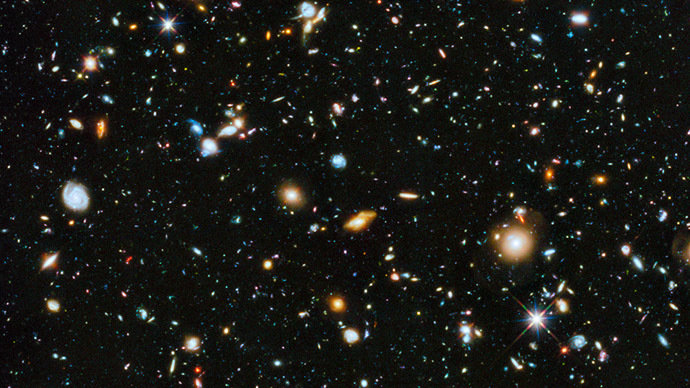– Hubble telescope captures 10,000 galaxies in one amazing shot (RT, June 4, 2014):
Billed as “the most comprehensive picture ever assembled of the evolving universe,” the latest image captured by the Hubble Space Telescope is an explosion of color that depicts thousands of galaxies in the universe.
Released on Tuesday, the beautiful image is part of a survey exploring the Hubble Ultra Deep Field – a portion of space in the constellation Fornax that astronomers have been compiling for more than 10 years – and features approximately 10,000 galaxies.
Read moreHubble Telescope Captures 10,000 Galaxies In One Amazing Shot

